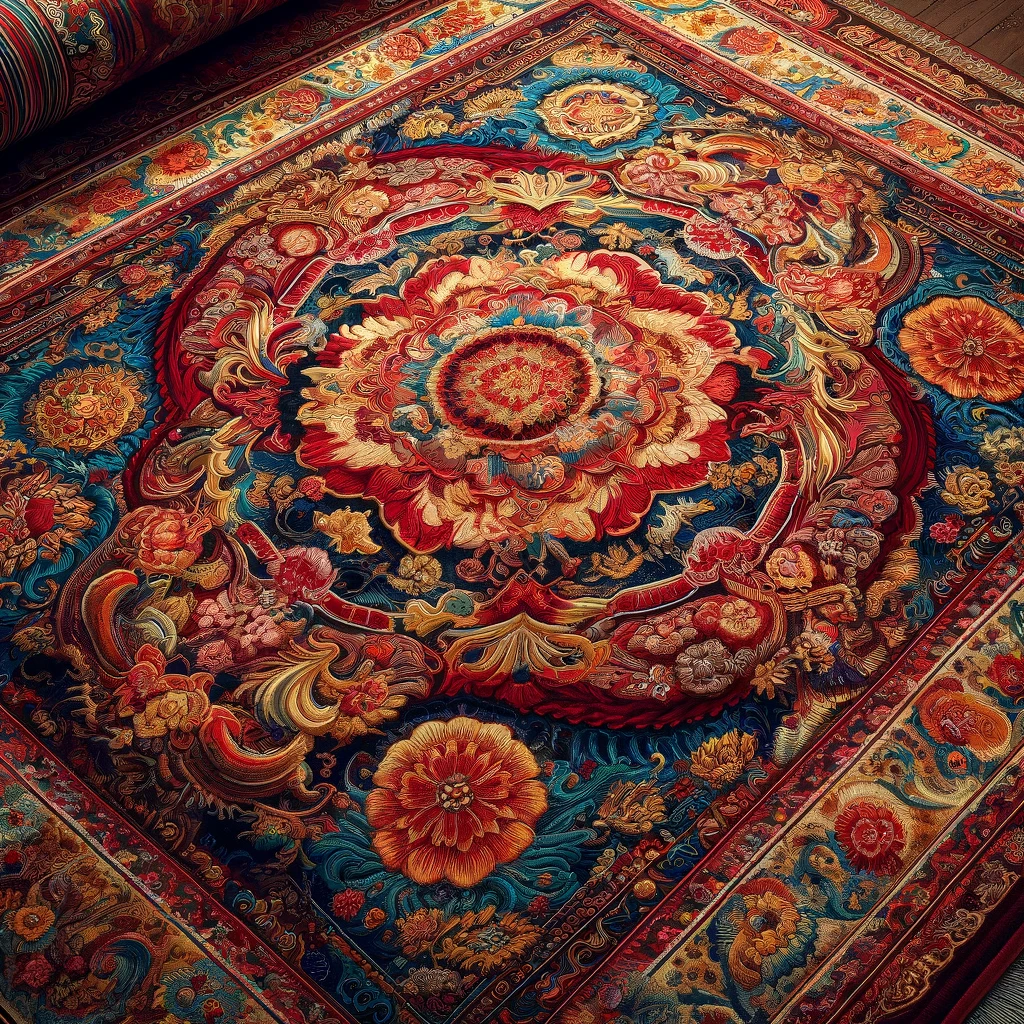Artistry in Tibetan Rugs
Nestled atop a plateau surrounded by the majestic Himalayan mountain ranges, Tibet proudly holds the moniker of the “Roof of the World.”
This region, which operates autonomously under China’s governance, boasts both challenging geography and a populated landscape that has safeguarded its history and unique cultural heritage over time.
Artistry in Tibetan Rugs
Within Tibet’s community of monks nobles, farmers, and nomads rugweaving is revered as a part of their legacy. Locally known as Drumtse rugs, these intricately designed rugs feature natural patterns. Symbols like the svastika, yin yang symbol, endless knot, lotus flower, tree of life, pomegranates, and depictions of animals such as tigers and dragons are frequently depicted in these textile creations.
Cultural Links: The Significance of the Silk Road
The Silk Road—a trade route from Asia to Europe—served a profound purpose beyond trade. It facilitated an exchange of cultures, religions, and artistic concepts. For instance, the spread of teachings among Turks highlighted and deepened cultural connections between Tibetan and Anatolian societies.
Common Themes in Anatolian Rug Designs
The analysis points out the themes found in Anatolian rugs, which have evolved over centuries of trade, along the Silk Road. These rugs feature elements such as dragons, tiger motifs like çintemani, trees of life, lotus flowers, pomegranates, clouds, and traditional patterns like swastikas and checkerboards. These shared designs signify a connection that highlights the cultural exchanges between these regions.
Varieties and Techniques of Tibetan Rugs
Tibetan rugs are divided into different styles based on their designs and purposes. Whether adorned with figures centered around medallions, scattered with patterns, or kept simple each style showcases a knotting method that distinguishes rugs from those made in China. The intricate imagery portrayed in these rugs—ranging from religious to purely ornamental—captures the stories of the area.

